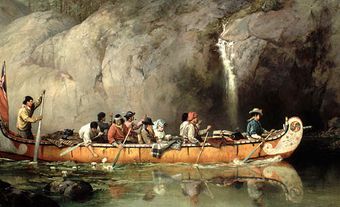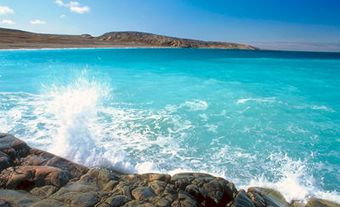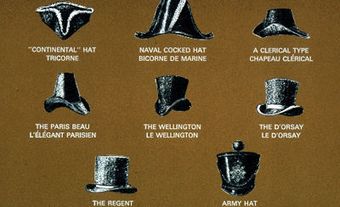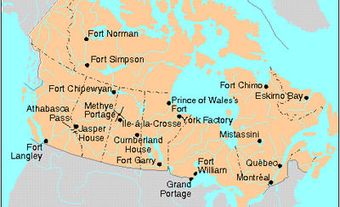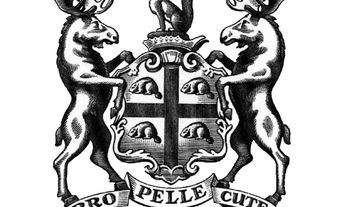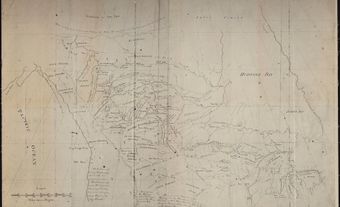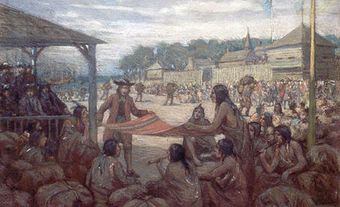The Hudson’s Bay Company (HBC) was founded in 1670. It is Canada’s oldest company. It started as a fur trading company. Much later, it got involved in retail. It owns 239 department stores in Canada and the United States. These stores include Saks Fifth Avenue and Saks OFF 5th.
This article is a plain-language summary of the Hudson’s Bay Company. If you are interested in reading about this topic in more depth, please see the full-length entry, Hudson’s Bay Company.

History
The HBC received a royal charter on 2 May 1670. This charter gave the HBC the right to operate a business. The charter also allowed the HBC to trade in Rupert’s Land. This was a huge territory. It extended from what is now northern Quebec and Labrador, northern and western Ontario and the Prairie Provinces (see Manitoba; Saskatchewan; Alberta). It also encompassed parts of what is now Nunavut and the Northwest Territories.
The HBC was a fur trading company. (See also Beaver pelts.) The head office was in London. The HBC set up many fur trading posts. The HBC traded with Indigenous peoples. Indigenous peoples travelled to the trading posts to barter the fur they caught for guns, metal tools, and textiles. The fur trade had a big impact on Indigenous peoples. For example, large numbers died after catching smallpox from European traders.
The HBC had competition. Its main competition in the 1700s were French fur traders. Then, in 1713, the French recognized the right of the HBC to trade in Hudson Bay exclusively. After this, the main competition the HBC faced was with the North West Company. In 1821, the HBC and the North West Company joined together. And British Parliament gave the HBC the sole right to trade in the Northwest Territories.
In the 19th century the HBC made some important changes. Their area was divided into districts and district managers were given control over these districts. District managers met at meetings run by the governor in North America (See Sir George Simpson). The governor in North America had much authority in the HBC. The HBC had much authority in the lands in which it operated. The HBC had many of the same functions that government had, especially in the Red River Valley and Vancouver Island. The HBC sold Rupert’s Land to Canada in 1870. Consequently, the HBC gave up its governing powers.
Retail Operations

In the late 1800s the HBC became heavily involved in retail. Its base was in western Canada. Most of the customers were settlers. The HBC was also involved in real estate. In 1910 the HBC was split into three departments. The departments were land sales, fur trade, and retail. In 1913 the HBC began to construct department stores. The first store was in Calgary. In the 1960s the HBC moved into other parts of Canada. It soon started to build department stores in places like Montreal and Toronto.
The HBC continued to expand from the 1970s onward. In 1978, the HBC bought the Simpsons department store chain. In 1993 it took over the Woodward’s department store chain. In 1998 it bought K-Mart Canada’s stores. These stores became part of the Zellers department store chain. In 2011 Zellers went out of business and the majority of Zellers stores closed by 2013. In 2023, HBC announced that 25 Zellers shops would open across Canada.
In the 2000s, the HBC offered online shopping. In 2013 the HBC bought the American retailer Saks, Inc. In 2015 the HBC bought the German department store chain, Galeria Kaufhof. The stores are located in Europe. By 2019, the HBC sold its European chain stores.
The HBC was listed on the Toronto Stock Exchange in 2012. In 2020 the HBC became a private company again. The HBC owns about 239 stores in Canada and the United States. It has 22,000 employees. It is perhaps Canada’s most famous company.

 Share on Facebook
Share on Facebook Share on X
Share on X Share by Email
Share by Email Share on Google Classroom
Share on Google Classroom
